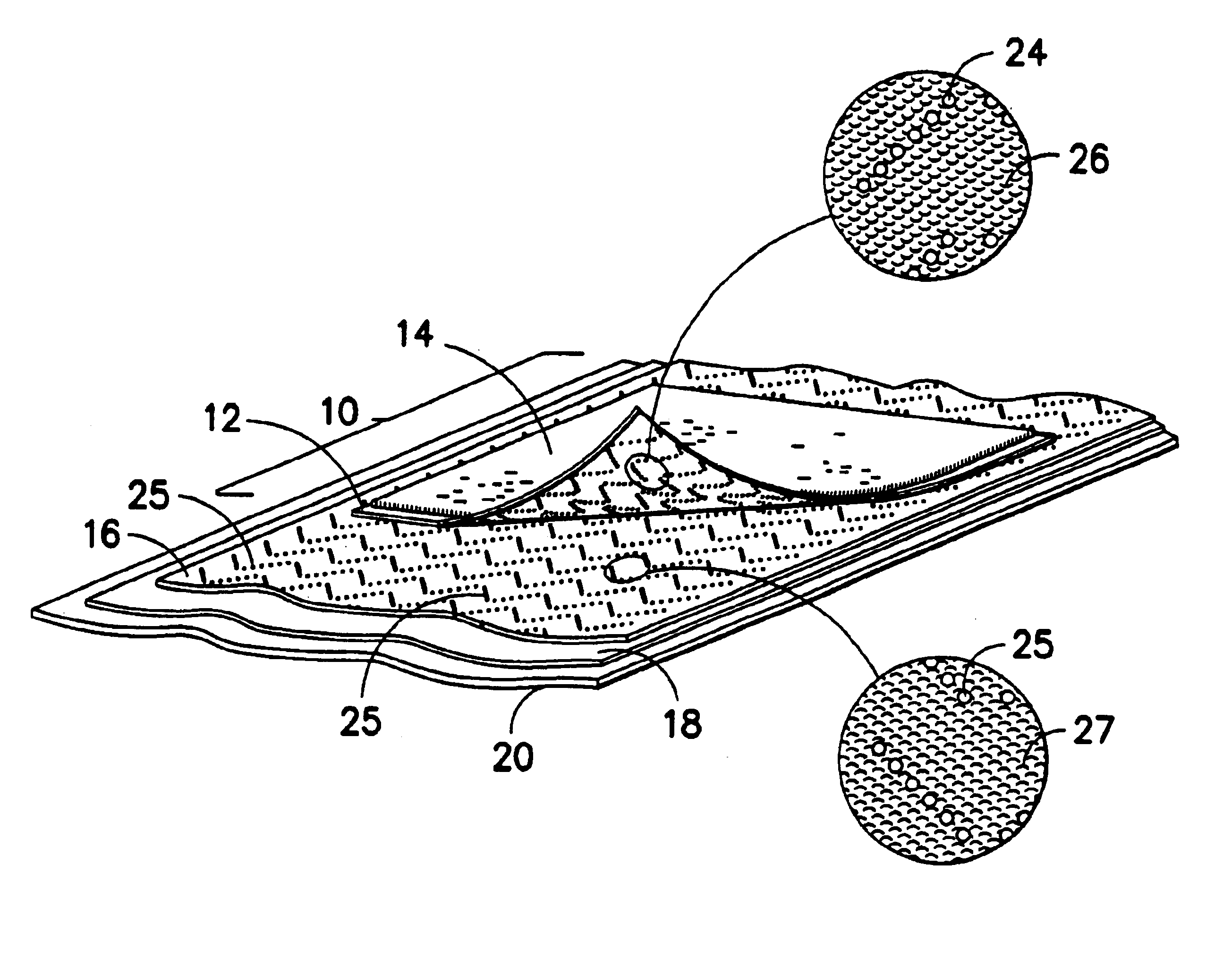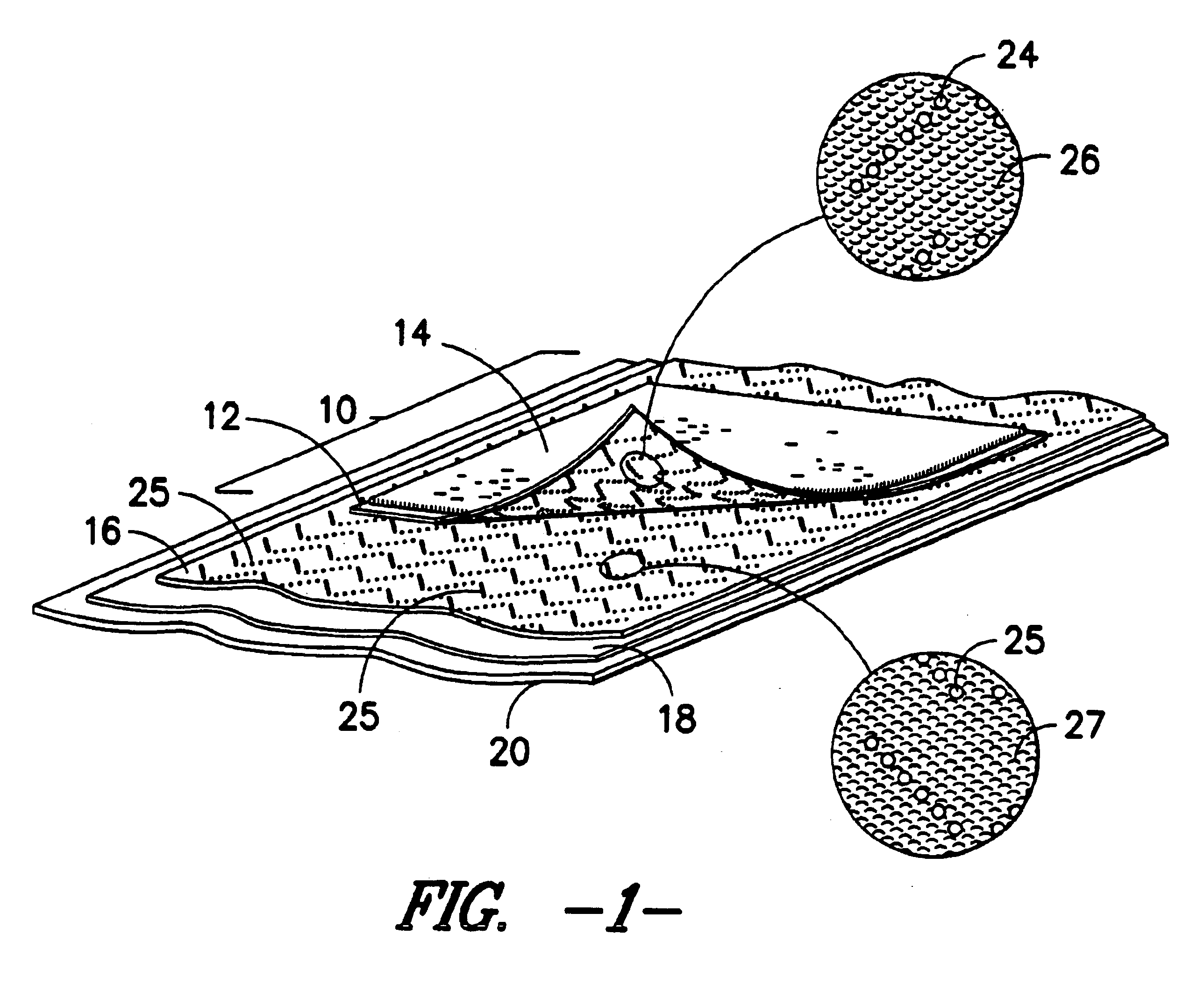Cleat-forming woven fabric article for the manufacture of anti-creep floor mats
a technology of woven fabric and floor mats, which is applied in the direction of carpet fasteners, carpet cleaners, instruments, etc., can solve the problems of cleats being quickly worn away, unwanted and potentially floor staining or dirtying articles needing to be removed, and attempts to use foam rubber backings on cleated floor mats or carpets. , to achieve the effect of easy and efficient production
- Summary
- Abstract
- Description
- Claims
- Application Information
AI Technical Summary
Benefits of technology
Problems solved by technology
Method used
Image
Examples
Embodiment Construction
solid rubber mat having the dense, solid rubber cleats was tested and compared to a foam rubber mat manufactured in accordance with the instant method. The units shown are millimeters of mat movement after a series of 100 two-step passes.
Surface Solid Rubber Mat with Cleats Foam Rubber Mat with Cleats
The test is performed by placing a test mat, which measures 85 centimeters .times.150 centimeters, on the surface to be tested. The position of the mat is marked and the mat is walked over 100 times, in the same direction, with each pass placing both feet on the mat (two steps). As the test is performed on a comparative basis to a control sample (in the present case the solid rubber mat) the person or people walking on the mat can vary from test to test, however it was an adult of average weight (75-90 kilograms) wearing normal outdoor shoes. The movement is measured after the 100 passes. Thus, the above test provides results based on comparative testing.
It can be seen from the results ...
PUM
| Property | Measurement | Unit |
|---|---|---|
| thick | aaaaa | aaaaa |
| temperature | aaaaa | aaaaa |
| pressure | aaaaa | aaaaa |
Abstract
Description
Claims
Application Information
 Login to View More
Login to View More - R&D
- Intellectual Property
- Life Sciences
- Materials
- Tech Scout
- Unparalleled Data Quality
- Higher Quality Content
- 60% Fewer Hallucinations
Browse by: Latest US Patents, China's latest patents, Technical Efficacy Thesaurus, Application Domain, Technology Topic, Popular Technical Reports.
© 2025 PatSnap. All rights reserved.Legal|Privacy policy|Modern Slavery Act Transparency Statement|Sitemap|About US| Contact US: help@patsnap.com


